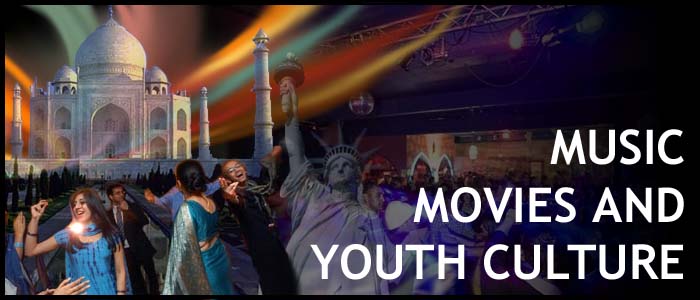From The Peopling of New York City

Where the political terrain can neither resolve nor suppress inequality, it erupts in culture. Because culture is the contemporary repository of memory, of history, it is through culture, rather than government, that alternative forms of subjectivity, collectivity, and public life are imagined. - Lisa Lowe, as quoted in Beyond Bollywood
Very often, culture is represented through its film and music. For South Asians, this cannot be more true; who has not heard of “Bollywood” and connected it with Indian culture. Traditions, and social practices can often be seen in many films and heard about in a culture’s songs. It is in this way that film and music help keep culture alive. This issue of preserving and representing ideals is even more important when seen in the context of an immigrant integrating into a new country, and culture. Immigrants often try to find a balance between honoring their own customs and facing the challenges of assimilation into a foreign culture. The South Asian community of Jackson Heights has found this equilibrium. Desi people shop and interact in this transnational community that still retains its distinct South Asian identity. Music and film are essential to this preservation. Media and culture go hand in hand, both evolving with each new generation.

While old time classic Indian films, music, and dance are still enjoyed, the ever-growing population of South Asians living in America has caused many changes in film and music production. These progressions have become clearly evident on every street corner of Jackson Heights. During the day, many vendors sell contemporary fusions of South Asian and Western popular music, and DVDs of popular modern films, some of which deal with immigrant life. At night, these changes are seen on the dance floor in what is known as the “Desi party scene.” These changes are most evident in the South Asian youth population, which finds it harder to identify with being just American or just South Asian. This uncertainty is often exacerbated by conflict with the parental generation, which often has a differing view on American culture. Many of these young adults have lived in America almost all their lives and attend high schools or colleges where they are constantly exposed to American youth culture. Instead of choosing between cultures, these teens often opt to incorporate both into their lives. How does music and film act as the medium connecting both worlds? By attending Indian dance parties, listening to select Bollywood pop music, watching the latest Hindi films, and interviewing South Asian youth, we were able to further our understanding of the changes happening in the South Asian youth community, as reflected in music and film, and the relationship of the ethnic media to its consumers.